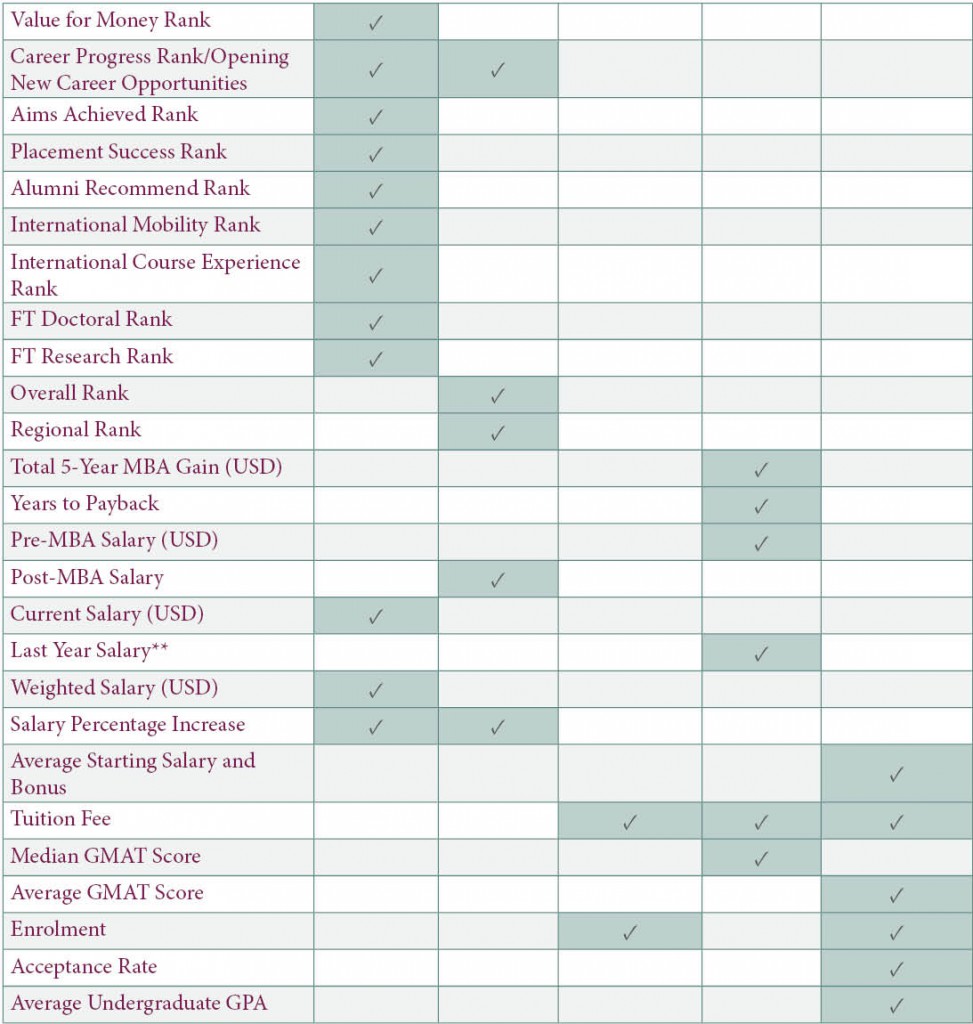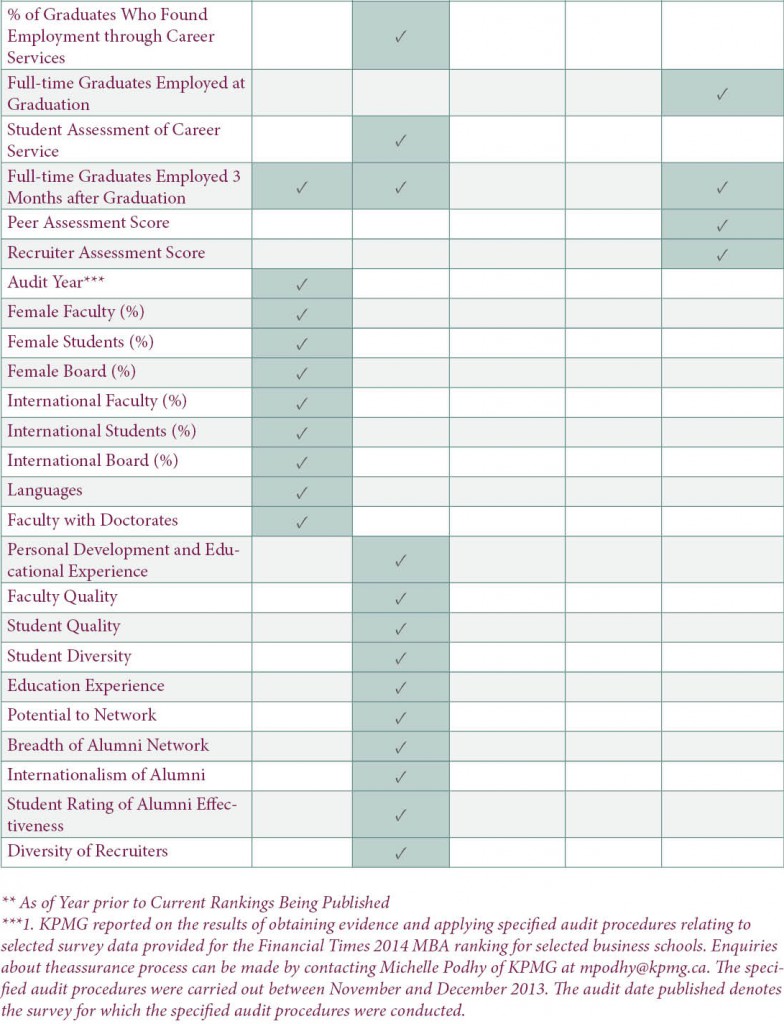
This series of articles has aimed to give you some details about five of the most internationally respected and widely popular MBA rankings.
During the series, we focused on what the Financial Times, the Economist, the Bloomberg Businessweek, the Forbes and the U.S. News & World Report rankings are like. We saw which features and criteria each of the rankings evaluates the schools against, how often the rankings are published, what their individual methodologies are and so on.
Here you can find an easy summary and a go-to tool about all the rankings we looked into. You can make a comparison and see which criteria each source includes in its ranking. You can see which source publishes information about the criteria that are most important to you.
Even though all rankings have certain advantages, if you are looking for thorough, very detailed and specific business schools rankings that include specific information about criteria that may not interest too many people but may be of interest to you, then the Financial Times and the Economist are the two sources you should refer to. The Financial Times rankings are also the most popular source for applicants outside of the United States.
Last but not least, remember that you should never rely on rankings only – be cautious and educate yourself about all aspects of the schools of your choice.
Business Schools Rankings are a great source of information as to where a particular programme stands globally in comparison to other big name institutions, but don’t forget that getting an MBA is not about attending a school that tops the charts, but instead about finding the ideal place to realise your potential and get the best return on your investment.





Comments